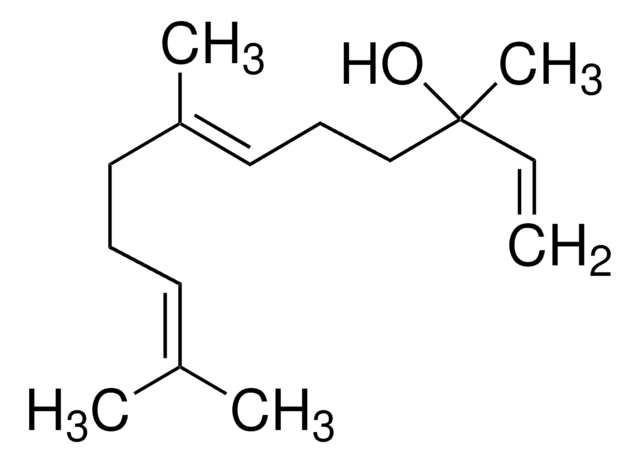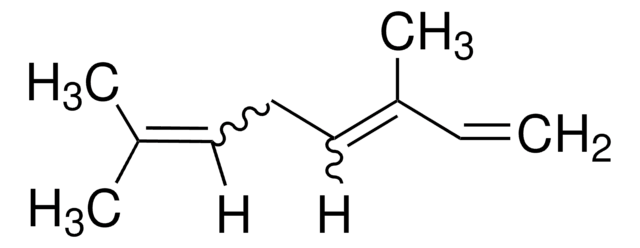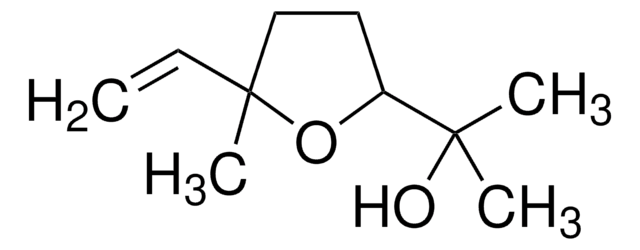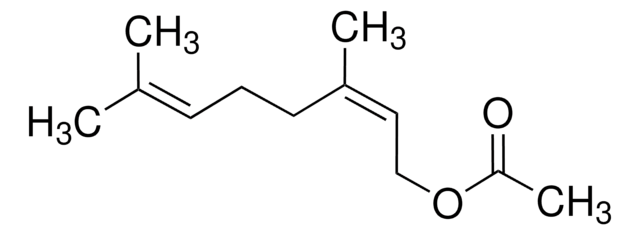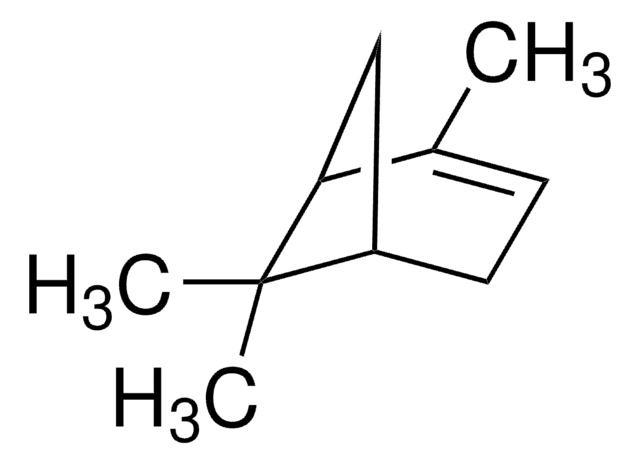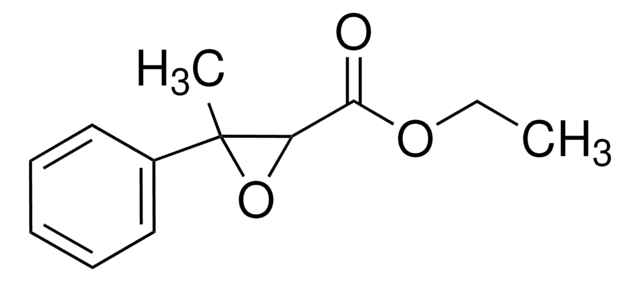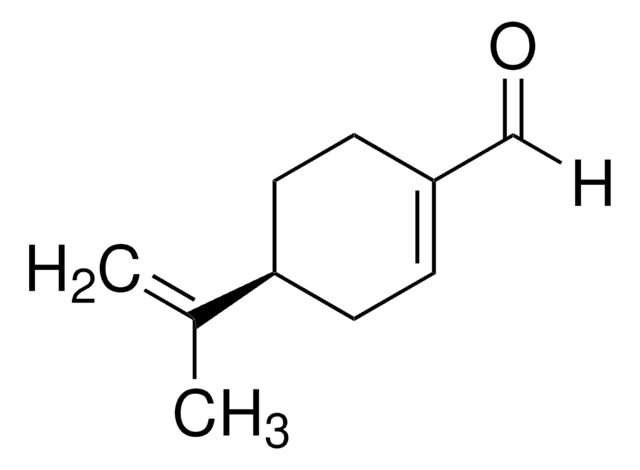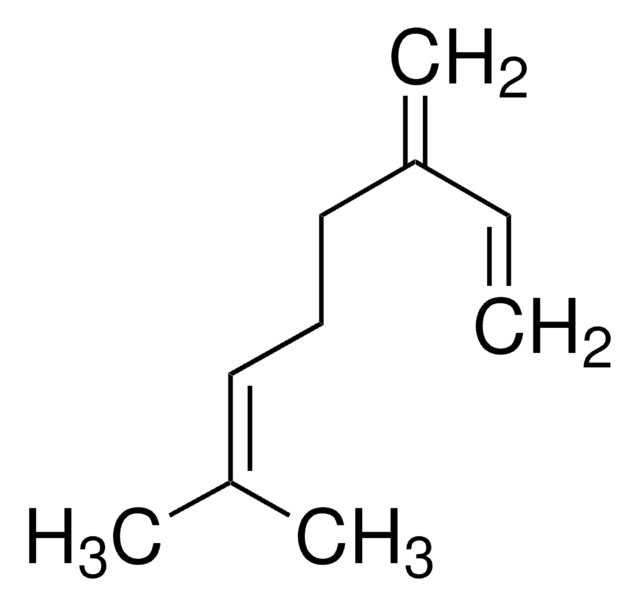Kluczowe dokumenty
W277207
Nerolidol
mixture of cis and trans, ≥97%, stabilized, FG
Synonim(y):
3,7,11-Trimethyl-1,6,10-dodecatrien-3-ol, 3-Hydroxy-3,7,11-trimethyl-1,6,10-dodecatriene
About This Item
Polecane produkty
pochodzenie biologiczne
synthetic
Poziom jakości
klasa czystości
FG
Kosher
agency
meets purity specifications of JECFA
zgodność regionalna
EU Regulation 1334/2008 & 872/2012
FCC
FDA 21 CFR 172.515
Próba
≥97%
zawiera
synthetic α-tocopherol as stabilizer
współczynnik refrakcji
n20/D 1.479 (lit.)
bp
114 °C/1 mmHg (lit.)
gęstość
0.875 g/mL at 25 °C (lit.)
Zastosowanie
flavors and fragrances
Dokumentacja
see Safety & Documentation for available documents
alergen pokarmowy
no known allergens
Organoleptyczne
green; floral; woody
ciąg SMILES
C\C(C)=C/CC\C(C)=C\CCC(C)(O)C=C
InChI
1S/C15H26O/c1-6-15(5,16)12-8-11-14(4)10-7-9-13(2)3/h6,9,11,16H,1,7-8,10,12H2,2-5H3/b14-11+
Klucz InChI
FQTLCLSUCSAZDY-SDNWHVSQSA-N
Szukasz podobnych produktów? Odwiedź Przewodnik dotyczący porównywania produktów
Powiązane kategorie
Zastosowanie
- Effects of Six Natural Compounds and Their Derivatives on the Control of Coccidiosis in Chickens.: This article discusses the use of natural compounds including nerolidol for controlling coccidiosis in poultry, indicating its applications in veterinary biochemistry and animal health (Hou et al., 2024).
Hasło ostrzegawcze
Warning
Zwroty wskazujące rodzaj zagrożenia
Zwroty wskazujące środki ostrożności
Klasyfikacja zagrożeń
Aquatic Acute 1 - Aquatic Chronic 1 - Eye Irrit. 2 - Skin Sens. 1
Kod klasy składowania
10 - Combustible liquids
Klasa zagrożenia wodnego (WGK)
WGK 2
Temperatura zapłonu (°F)
262.4 °F - closed cup
Temperatura zapłonu (°C)
128 °C - closed cup
Środki ochrony indywidualnej
Eyeshields, Gloves, type ABEK (EN14387) respirator filter
Wybierz jedną z najnowszych wersji:
Masz już ten produkt?
Dokumenty związane z niedawno zakupionymi produktami zostały zamieszczone w Bibliotece dokumentów.
Klienci oglądali również te produkty
Global Trade Item Number
| SKU | GTIN |
|---|---|
| W277207-1KG-K | 4061837862168 |
| W277207-4KG-K | 4061837862175 |
| W277207-SAMPLE | |
| W277207-1KG | |
| W277207-4KG | |
| W277207-9KG | |
| W277207-9KG-K | 4061837862182 |
| W277207-SAMPLE-K | 4061837516511 |
Nasz zespół naukowców ma doświadczenie we wszystkich obszarach badań, w tym w naukach przyrodniczych, materiałoznawstwie, syntezie chemicznej, chromatografii, analityce i wielu innych dziedzinach.
Skontaktuj się z zespołem ds. pomocy technicznej